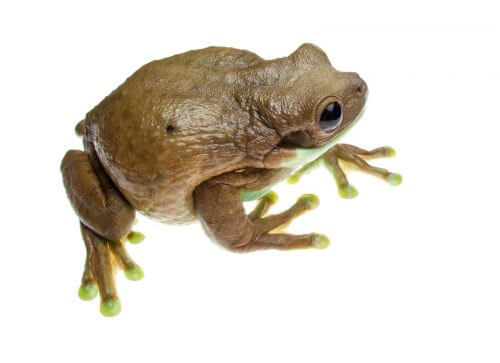Many species of amphibians have defense mechanisms that rely on the secretion of substances through the skin. Most of these substances contain strong toxins designed to neutralize a potential predator, but one group of tree frogs has gained special attention for its defensive secretions: the milky frog.

By: Gil Weisen
Many species of amphibians have defense mechanisms that rely on the secretion of substances through the skin. Most of these substances contain strong toxins designed to neutralize a potential predator, but one group of tree frogs has gained special attention for its defensive secretions: the milky frog.
This species of amphibian has a particularly thick and sticky skin secretion, which clings to the attacker and isolates him, while at the same time allowing the frog to escape. Gil Weisen, a certified entomologist from Tel Aviv University, encountered this species while surveying insect and arachnid species in the Amazon rainforest in eastern Ecuador.
"I was called in the middle of the night to the shower rooms at the research station," said Gil, "where I discovered a large weasel of the species Trachycephalus venulosus hugging one of the shower heads. Although I did not know this species, I decided to remove it and release it in a nearby area. It was a bitter mistake. In seconds, my hands were filled with sticky white pulp, as thick as carpenter's glue." Milk thistles defend themselves from predators by rapidly excreting substances through the skin on their backs. To the researcher's surprise, the attempts to wash the material with water only made the situation worse. "This sticky secretion is not soluble in water, and even becomes more viscous the more you try to remove it. The interesting thing is that, in contact with the skin of the elk, the friction of the material is minimal, a fact that allows the elk to slip out of the predator's grip and set free." Weisen reports that he spent hours trying to get the substance off his hands by scrubbing and scraping.
Milk thistles are mostly known as pets thanks to their comfortable climate and bright colors. However, when they feel threatened they do not hesitate to use their weapons - chemical substances. The chemical composition of the skin defense is not fully known, but it may have potential for medical or industrial application. These materials have a basic (alkaline) nature and several toxic components, but there is no evidence that they are dangerous to humans. The physical properties of the skin protection are interesting due to their being insoluble in water, and thanks to their selective adhesion and elasticity in contact with certain substances on the one hand, and on the other hand their repulsion towards other substances. It is possible that in the future synthetic materials will be used based on the skin protection properties of milk thistle.
